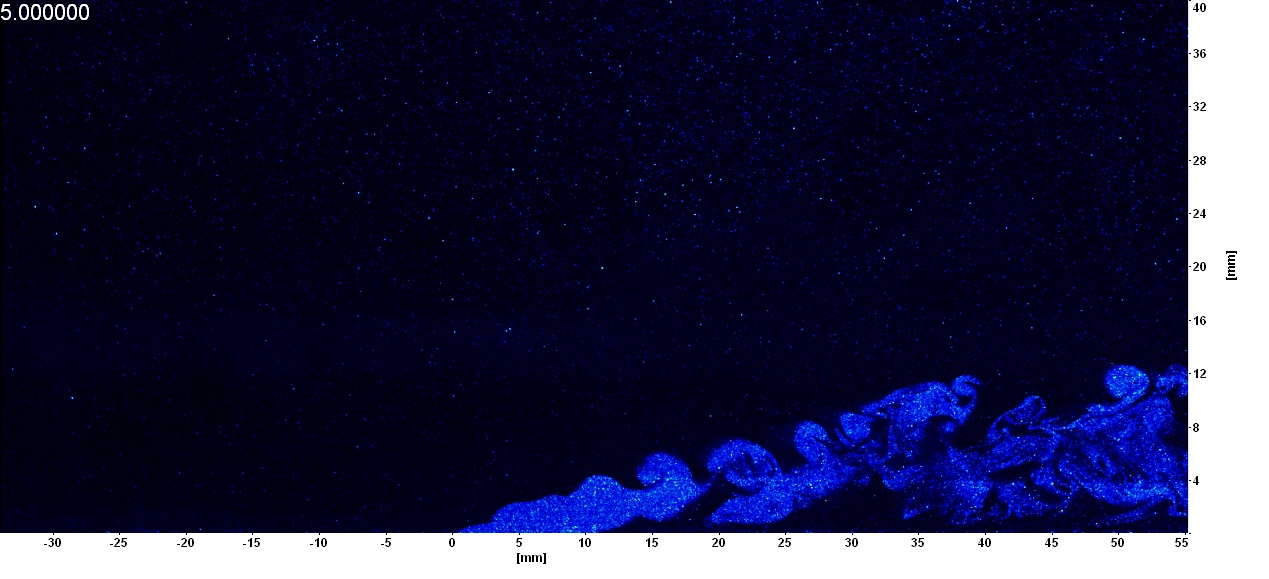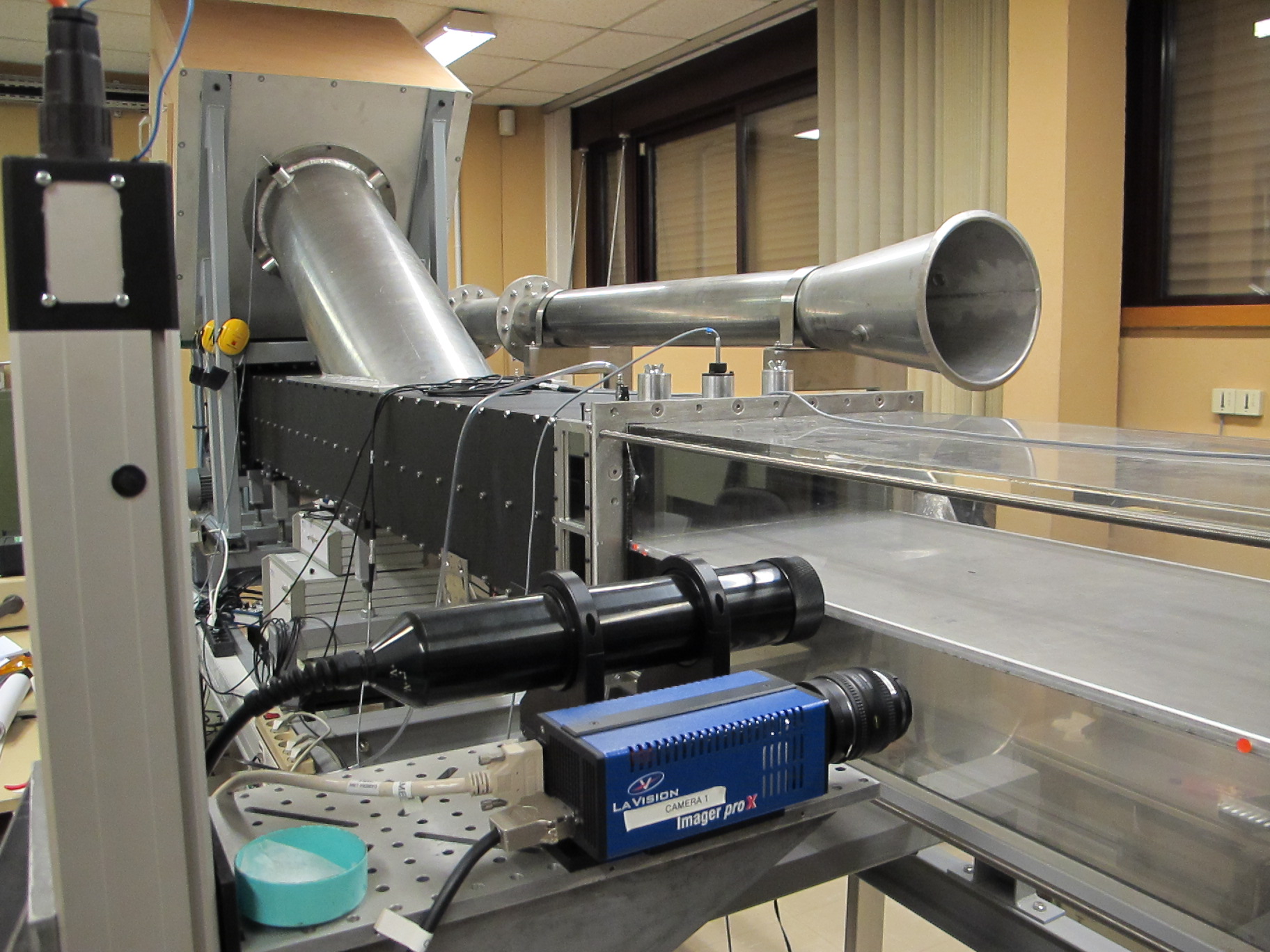Section: Overall Objectives
Overall Objectives
This project aims at developping suitable tools for studying turbulent flows that are often encountered in internal aerodynamic such as the impinging jet or the the jets in crossflow (see Figure 1 -top). The originality of this project stems from the simultaneous and strongly coupled experimental and numerical studies of such jets.
From an experimental point of view, the test facility Maveric (MAquette pour la Validation et l'Expérimentation sur le Refroidissement par Injection Contrôlée) developed at LMAP and its metrology are used. An overview of this test rig is presented in Figure 1 -bottom. This test facility is able to produce the kind of flow depicted in Figure 1 -top. The configuration of an isolated jet in a turbulent crossflow is experimentally investigated to produce high quality data (mainly related to the velocity field properties). One-component laser Doppler velocimetry (LDV) as well as particle image velocimetry (PIV) are the two workhorses used in order to experimentally characterize the flowfield.
|
A close interaction during the course of the project between experiments, simulation and physical modelling represents the backbone of our methodology. From the simulation point of view, one of the short term aims is to perform a direct numerical simulation of an isothermal configuration of an inclined turbulent jet discharging into a turbulent crossflow. This is done in the framework of our participation in the IMPACT-AE EU funded program (http://www.impact-ae.eu/). The flows Mach number being small, preserving the accuracy of the specifically developed compressible solver for such flow regime represents quite a challenge. A collaboration has been established with the Bacchus team in order to avoid too many useless redundancies. The Cagire team shares with Bacchus a common framework of development in which both common and team specific tools are being elaborated. From a numerical point of view, the challenge stems from the recourse to hybrid unstructured meshes, which is quite mandatory for our flow configuration, and implicit time integration, which is induced by the low Mach number of the flow. From the point of view of the interaction between experiments and CFD, the challenge is mostly related to the capability of ensuring that the flow simulated and the flow experimentally investigated are as close as possible.
In short, the team members are presently developing their activity around the following axes:
-
The development of a DNS tool able to simulate low Mach number turbulent flow and provide highly accurate simulations results.
-
the development of low Mach schemes for unsteady flow simulations.
-
The development of advanced turbulence RANS and hybrid RANS-LES turbulence models adapted to zero Mach and low Mach turbulent flows with a specific emphasis on the wall-flow interaction.
-
The development of a test facility to generate high quality experimental data for the purpose of flow analysis, turbulence models and simulations results assessment.




